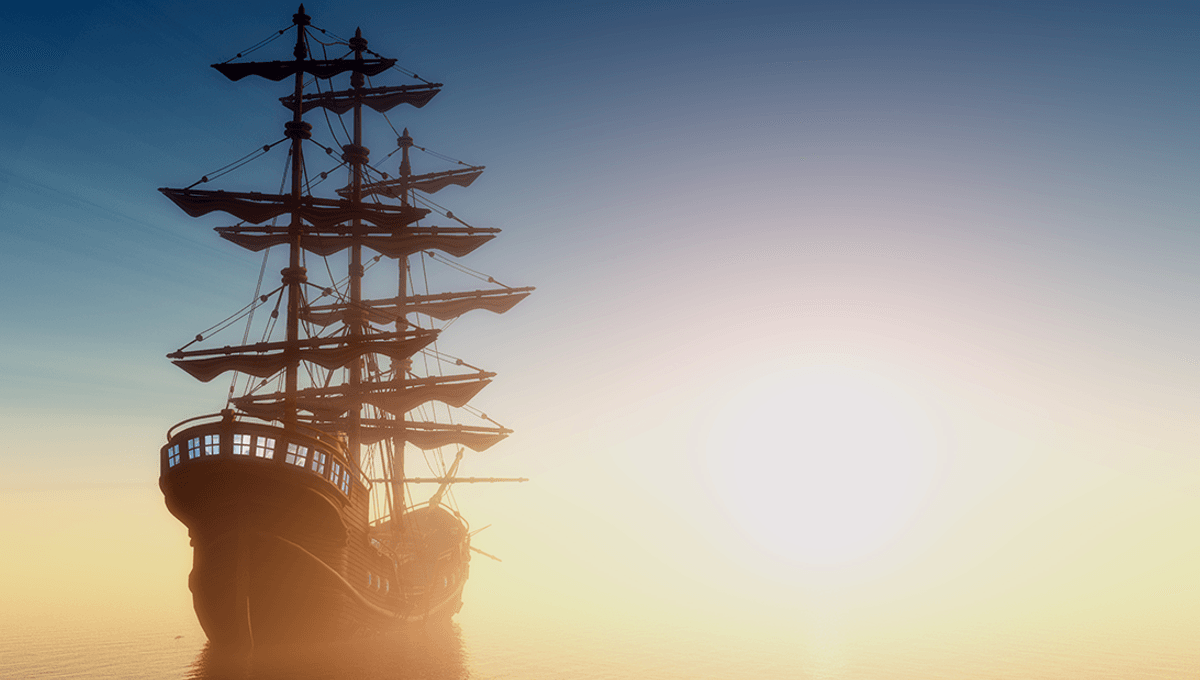
On December 5, 1872, the crew of the British ship Dei Gratia came across a ship called the Mary Celeste, drifting aimlessly and completely un-crewed, when they were about 644 kilometers (400 miles) east of the Azores, a group of islands in the Atlantic Ocean.
The commander of Dei Gratia, David Morehouse, knew that the ship had set sail for Italy eight days before him, and should have already arrived. He diverted course and sent his crew aboard to try and help. What they found only deepened the mystery. The ship had been abandoned, but the crew’s belongings remained on board. The ship had at least a six-month supply of food and water and 1,701 barrels of industrial alcohol aboard – however, the crew had seemingly abandoned ship, taking the lifeboat and risking the open seas rather than remaining on board.
The few clues available, and the fact that the crew did not later show up, turned the case of the Mary Celeste into an enduring mystery rife with speculation. Explanations range from pirates to natural phenomena, with a few massive sea monsters thrown in for good measure.
There are suggestions that Morehouse’s crew could have attacked the ship themselves, though this does not account for how the slower ship caught up on the faster ship after an eight-day head start. It’s likely not the case that a group of pirates got there before Morehouse, given that the cargo of valuable industrial alcohol was still left on board. Mutiny would be an odd suggestion too, given that there was no sign of fighting on board, and mutineers would traditionally take over the boat rather than flee never to be seen again.
A plausible theory – given that one of the ship’s two pumps was disassembled, and a small amount of water was found in the ship’s bottom – is that with one pump down, the captain may not have known how much water they were taking on board. When they hit bad weather later, this could have caused the captain to order his crew to abandon ship, rather than risk it sinking. The last entries in the ship’s log shows that the Mary Celeste was going through rough waters, with high wind speeds of over 35 knots.
Another possible explanation is that the captain panicked after an explosion caused by the alcohol cargo, and ordered the crew to abandon ship. The problem with this is that there were no signs of a fire, and most of the barrels remained full and intact. However, there were a few barrels that were empty – nine of the 1,701 total barrels on board.
In 2006, one team tested the idea that these barrels could have triggered an explosion large enough to make the crew leave the safety of their ship.
Dr Andrea Sella from the University College London Chemistry Department used butane gas and cubes of paper to simulate wooden barrels.
“What we created was a pressure-wave type of explosion,” Dr Sella said in a press release. “There was a spectacular wave of flame but, behind it, was relatively cool air. No soot was left behind and there was no burning or scorching.”
“Given all the facts we have, this replicates conditions on board the Mary Celeste. The explosion would have been enough to blow open the hatches and would have been completely terrifying for everyone on board.”
Once they were off the ship, perhaps just as a precaution in case the fire took hold, the crew could have been lost to the stormy seas.
“It is the most compelling explanation,” said Dr Sella. “Of all those suggested, it fits the facts best and explains why they were so keen to get off the ship.”
Ultimately though, we will probably never get a definitive answer to what happened on that night in December 1872.
An earlier version of this article was published in May 2022. =
Source Link: In 1872 The Mary Celeste Was Found Completely Abandoned. What Happened To Its Crew?